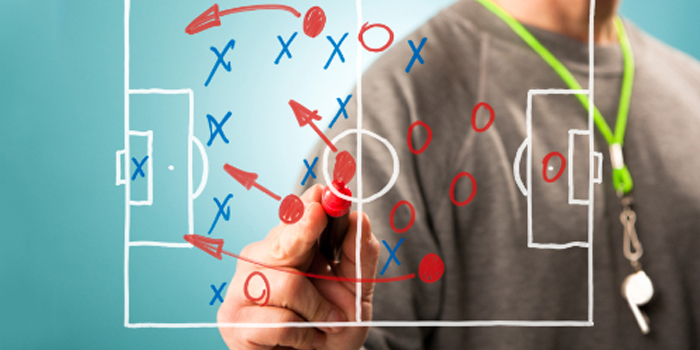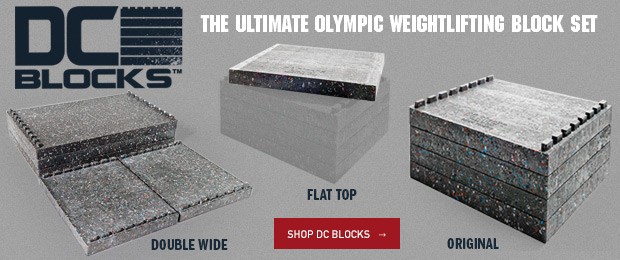
In my world, there are many four-letter words that I don't like hearing. "Core" ranks up near the top of the list. I could go on for days about why I don't like this word. But instead of just griping like an old strength coach who tells you how back in the day, squats were all that we needed, I'll explain why I think we need to stop using this word so that we can better communicate what we're doing and do a better job training our athletes.
The main reason I don't like the word "core" is that it's indefinable. What does it mean to train your core? Over the years, I've received countless notes and emails from athletic trainers, personal trainers, doctors, and coaches saying something along the lines of, "Athlete A is improving. Today he can train core." What does this mean? Last time I checked, the human body is just one big kinetic chain. For example, let's think about ACL injuries. If an athlete has poor ankle mobility, the foot will more than likely externally rotate instead of toeing off when the athlete runs. If we follow the kinetic chain, we'll see that the knee now moves internally (valgus knee) when this occurs. This motion can increase the chance of an ACL tear. With most ACL tears that I've seen, the blame is put on either posterior chain strength or "core" strength. Placing the blame on posterior chain strength is dead on. Too many athletes have weak hamstrings and glutes. But what does it mean when one blames core strength?
MORE: 5 Coaching Rants to Reframe and Apply
Using the above example, we could surmise that the core begins down in the foot because the foot pushes against the Earth to propel us forward, and if it moves poorly, the entire body will move poorly. I've also had numerous people tell me that someone is "tight" and that it's a core issue. We then roll the person's feet on a ball for a few minutes and, all of a sudden, the person is less "tight." This isn't magic. We've just loosened the fascia around the ankle joint and the joints of the feet. So did we have a "core" issue or a body issue?
Now that I've left the foot, I could do what most do and address the glutes. I won't though because that has been done too many times. If you're unaware of glute training, you clearly have never been on the interwebz. In my eyes, the lat is the upper body glute. It's a huge piece of muscular tissue helping to stabilize the joint that leads to two very mobile limbs. I realize that there are differences, but if you've ever benched with a big bencher or done overhead work with a Strongman, you'll see how important the lats are in these lifts. So is the lat part of the core? If someone tells me to do core work, should I do some direct lat work, or is it all about the TVA and psoas? Or is doing TKEs and VMO work also important? Or are cool initials just the answer to core work?
In my jest, I hope you see that I don't believe core work is limited to just the muscles of the midsection. Trying to compartmentalize this work is an exercise in futility. As coaches, I think that we need to address many aspects of strength and work on strength as well as stability.
Here are some of my favorite ways to train stability and why I think it matters:
Farmer's Carry (with variations)
I use every variation of farmer's that one can imagine. I've used traditional farmer's as well as single arm, overhead, and one arm up with one arm down. The latter variation is a great way for athletes to train stability. You could use them as a warm-up or a finisher. I rarely use farmers as the main lift though. Instead, I have my athletes use them with very light weight as a portion of their warm-up. When I add them in the warm-up, I keep them light with very strict form. This is a great way to get the athletes to fight against rotation or leaning. If I use them later in the lift, I go heavy with them. I've had athletes walk with over 200 pounds per hand for distance. With the heavier loads, I tend to worry less about a slight breakdown of technique and more about the effort put into not allowing the body to fold over. As I said in my last article, sometimes we load dysfunction, whatever that is...
Landmines
I could probably name 100 landmine exercises and their variations, but I won't waste your time and mine. The beauty with the landmine is that if you have a small budget (like I do), just jam a barbell into any corner (I use our seated row area). I tend to do unilateral work with our landmine work, but sometimes I'll put two barbells together and do some double arm/leg work. Be creative with your landmines.
Some options to get you started include: Romanian deadlifts (single leg, single arm), presses (single arm, single leg, step back with the same leg or the opposite leg, push press, lateral), squats (with a press, single arm, double arm like a goblet squat, while holding a locked out press), and throws (have the athlete do the lift explosively, row and then switch hands and throw). There are a ton of variations that you can utilize, and they work the entire body as one big kinetic chain.
Stability Ball Work
I use stability balls, but I don't love them. I've been known to do some presses off of them but not very often because I don't see a great benefit. I do like doing stir the pot, planks, or push-ups with the feet on the ball. For the record, I would never have an athlete perform a squat on a ball, and if you do, we aren't friends anymore. I'll also add that I have yet to see the benefit of using the Bosu ball for these movements as well as for squats and lunges. If someone wants to teach me, please do.
Upper Body Unilateral Lifts
Single arm dumbbell floor presses are hard, and I consider them an advanced lift. The athlete must overcome inertia without twisting and stabilize the weight in the locked out position. I suggest starting the athlete with single arm dumbbell bench presses and single arm dumbbell overhead presses. I've also seen great benefits from doing single arm barbell overhead work. It's a very humbling exercise. Much like some of the other exercises I've discussed, it's a great full body exercise that really makes the body want to twist and lean. With unilateral upper body work, use your imagination and see what works best for you.
Unilateral Lower Body Lifts
I won't debate whether or not a Bulgarian split squat is unilateral because it isn't. I'm talking about movements such as single leg Romanian deadlifts. A movement like this can be done with a barbell, dumbbells, or two dumbbells. Also, pistol squats and single leg squats off a box are great alternatives. Similar to unilateral upper body work, try it on yourself. If it works, keep it, and if it doesn't, toss it.
Paloff Press (with variations):
The Paloff press is a great lift. I tend to use a band for it because that's what is available to me at my facility. I have our athletes do these with an overhead press (take the band overhead instead of out in front). You could also do a lateral lunge with a Paloff press (isometric or dynamic). We've used Paloff walks. Have an athlete walk while you pull the band (again isometric or dynamic). One undervalued variation is the seated isometric Paloff. Have the athlete sit with the legs straight out in front of him. Hold the extended position of a Paloff with a band. Your job is to walk around wherever you want pulling the band. All of these variations show that they are full body movements.
Everything that I've discussed above can be performed as an accessory or even a warm-up exercise.
At the end of the day, if you want a strong athlete, don't worry about the core as much as you worry about squats, pulls, and presses. As a profession, we too often chase the new, sexy thing. Squats are only sexy when I do them with Nate Harvey spotting me. Find ways to make your athletes stronger and realize that "core" is just a word people use to fill space like...um...bigly?











1 Comment